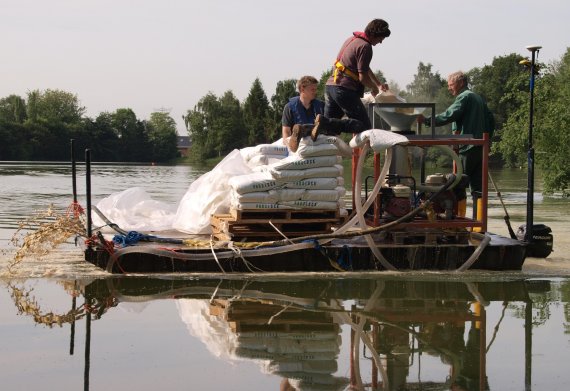Photo: Guido WaajenWaaien (58) is a biologist at the Brabant Delta water board in Breda, and works fulltime on the control of blue-green algae and the improvement of water quality. For the past eight years he has also been doing research on combatting blue-green algae. On 3 May he graduated with a PhD for his results.
Blue-green algae are caused by an excess of nutrients in the water. The solution seems simple: reduce the surplus of nutrients. But it is not as easy as that in practice, show tests Waajen conducted in ponds in Brabant. No two ponds are the same, which means that blue-green algae control is done on a case-by-case basis. ‘And the basis for that tailor-made approach is a good analysis of the water system,’ explains Waajen. ‘Where does the phosphorus come from? What gets dumped in the water and how much phosphorus is already in the pond, the algae and the ground? And what about the water plants and fish? If you don’t have that clear, you don’t know which package of measures to opt for. And then it’s a black box.’
In two ponds in Dongen and Eindhove, the researcher created trial compartments using dams, so he could test various different measures against a surplus of phosphorus. He made sure no more phosphorus got in from outside, and then compared several combinations of four promising measures: dredging, adding a phosphorus binder (Phoslock), adding a clarifying agent, and active management of the fish stocks. Phoslock is a clay enriched with lanthanum, which binds phosphorus efficiently. A clarifying agent is a saline solution (poly-aluminium chloride) which forms aluminium hydroxide in water, which sinks to the bottom in flakes, capturing algae as it goes.
Both dredging and phosphorus binding work, concludes Waajen. When combined with a clarifying agent and active fish stock management, these measures leave murky ponds clear again. As long as phosphorus runoff from elsewhere does not mess things up, that is. ‘So you have to deal with both sources of phosphorus, external and internal. Otherwise you are fighting a losing battle.’

